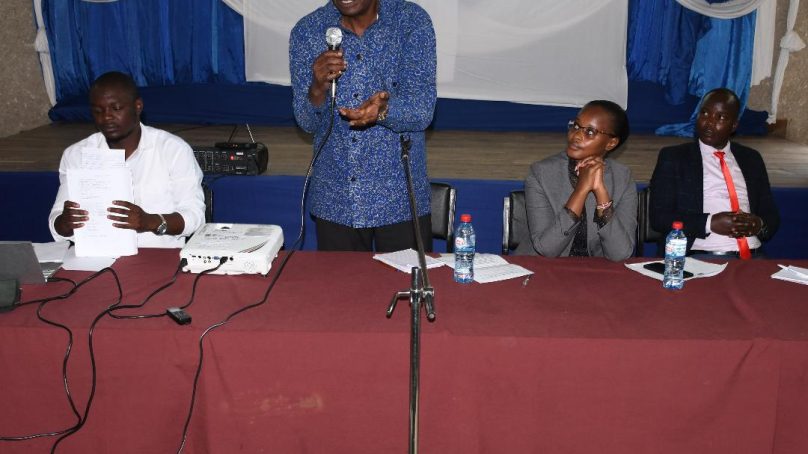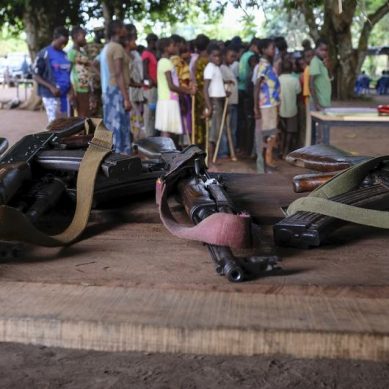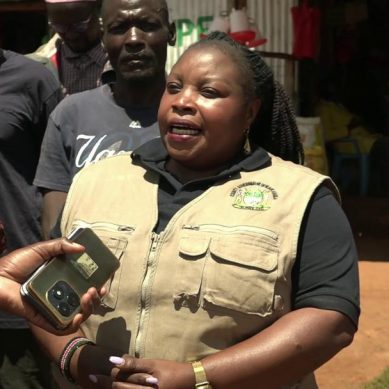
Faced with rising human-wildlife conflicts, Kenya says it working on strategies to resolve a situation that threatens to decelerate the growth of tourism – one of the East African nation’s economic pillars that faces fierce competition from other countries in the region.
Wildlife is a key component of Kenya’s tourism but the encroachment of human settlements on wildlife sanctuaries has unleashed competition for resources – water, grass and land for agriculture – that often results in tragedy.
Against this backdrop, the Kenya government says it is committed to engendering legislative reforms t protect human and wildlife, as well maintain pristine ecosystems.
Principal Secretary for State Department of Wildlife and Tourism Silvia Museiya says the proposed Wildlife Conservation and Management Act 2025 is a crucial step towards restoring the balance between conservation and community welfare. The current legislation, she says, is outdated and inadequate in the protection of vulnerable communities living near wildlife habitats.
According to Museiya the proposed Wildlife Conservation and Management Act 2025 seeks to modernise how the nation governs, conserves, utilises and shares benefits from wildlife resources for the good of all Kenyans.
She laments, though that, despite wildlife conservation being a key pillar of Kenya’s economy supporting the tourism sector among other forms of wildlife economy, the sector faces many challenges including human-wildlife conflicts, climate change and associated impacts, habitat loss, outdated legislation and inequitable benefit sharing mechanisms.
The principal secretary was, however, happy that the proposed statute had the potential to transform the economy by introducing a forward-looking agenda for Kenya’s conservation sector. Museiya pointed out that the Bill will result in a more inclusive and effective approach to wildlife conservation, benefiting both nature and humans.
The principal secretary made the remarks in a speech delivered on her behalf by the Deputy Director for Wildlife Conservation Eric Watende during a public participation forum at the Rift Valley Regional Commissioner’s plenary hall where stakeholders discussed various amendments to the Bill.
Through a gazette notice dated April 22, 2025, the ministry has been engaging citizens in all the 47 counties from May 7, 2025 to May 26, 2025 to gather views on the proposed Bill.
The Wildlife Bill 2025 (Amendment) proposes harmonisation of wildlife laws with the Constitution of Kenya (2010), integrate the National Wildlife Policy (2020) and Wildlife Strategy (2030) and clarify roles between national and county governments.
It also addresses emerging conservation issues such as habitat loss and climate change and reengineers the wildlife compensation system for faster and fairer outcomes. It further aims to amend the existing Wildlife Conservation and Management Act, No.47 of 2013, primarily to enable joint management and revenue sharing between county governments and the national government concerning national parks.
Nakuru residents welcomed the exercise but raised concerns over delayed compensation for wildlife-related damages, delayed response after attacks by wild animals, lack of compensation when farmers’ livestock and crops are destroyed by wildlife and restricted access to traditionally owned communal lands due to gazettement of protected areas.
While submitting his views, Jackson Raini, an expert in environmental planning, management and governance decried the increased destruction of crops and attacks on humans by baboons in Free-Area, Race Track, Barut and Naka Estates, a sentiment that was shared by other participants.
Raini emphasised the need for fair and timely compensation and proposed that primates be included in the wildlife species that are eligible for compensation.
Currently, the Third Schedule of the Act spells out specific wildlife species for which compensation may be paid in the event of crop destruction or livestock killing. They are lion, buffalo, wildebeest, leopard, hippos, rhinos, elephants, hyena, zebra, crocodile snakes and wild dogs.
The expert said compensation for cases of communities losing crops, property and even lives, were slow and inconsistent. He conceded there was need for a legal framework that reflects realities on the ground.
He faulted the current compensation model, advocating for a simplified and efficient process to ensure timely relief for victims of wildlife-related damage and emphasised the importance of aligning the proposed reforms with the Constitution of Kenya (2010) the National Wildlife Policy (2020) and Kenya Vision 2030.
Other residents offered that the Bill needed to be clear on who maintains the register for conservancies, urging for the need for a clear distinction to avoid a lot of bureaucracies and time-consuming processes.
Watende explained that ongoing countrywide process was part of their constitutional obligation under Article 10 and seeks to bring on board citizens and stakeholders in shaping a law that reflects their concerns and aspirations.
They indicated that Bill proposed reforms in governance structures, sustainable financing, human-wildlife conflict management, enforcement, research, and equitable benefit sharing with local communities.
It further aims to create a unified legal framework for wildlife management, incorporating key policies and strategies and seeks to define the respective responsibilities of the national and county governments in wildlife matters.
Wildlife Conservation and Management Bill 2025, defines conservation areas as an area set aside for wildlife conservation and includes national parks, national reserves, national sanctuaries, conservancies or wildlife critical areas designated as such.
- A Tell Media / KNA report / By Esther Mwangi and Nelly Kiarie
Deputy Director of Wildlife Conservation Eric Watende addresses participants at the Rift Valley Regional Commissioner’s Plenary Hall in Nakuru during a public participation on the proposed Wildlife Conservation and Management Act, 2025. Credit: Nelly Kiarie).








